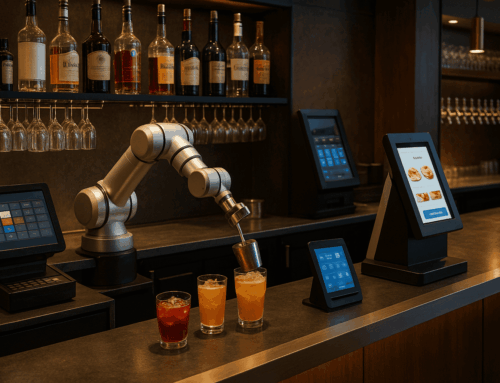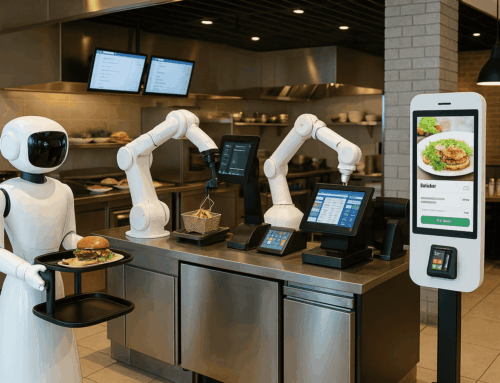Running a restaurant involves juggling multiple tasks simultaneously, from managing inventory and tracking orders to handling staff schedules and ensuring customer satisfaction. With so many moving parts, it’s easy to become overwhelmed. This is where restaurant management software comes in. This guide will explore how restaurant management software can transform your business, improve efficiency, and boost profitability.
What is Restaurant Management Software?
Restaurant software is a digital solution designed to streamline and automate various aspects of running a restaurant. It integrates multiple functions into a single platform, making it easier to manage operations, enhance customer service, and make informed decisions based on real-time data.
Key Features of Effective Restaurant Management Software
- Inventory Management: Track inventory levels in real-time, reduce waste, and manage supplier relationships efficiently.
- Table Reservations and Management: Optimize table allocation, reduce wait times, and enhance the dining experience.
- Employee Scheduling and Payroll: Automate scheduling, manage shift changes, and ensure accurate payroll processing.
- Customer Relationship Management (CRM): Maintain customer profiles, track preferences, and implement loyalty programs.
- Reporting and Analytics: Generate detailed reports on sales, expenses, and customer behavior to make data-driven decisions.
- Integration with Other Systems: Seamlessly integrate with accounting, marketing, and other software solutions.
How Restaurant Software Improves Efficiency
Implementing restaurant pos software can significantly enhance your restaurant’s operational efficiency. Here’s how:
- Streamlined Order Processing: Reduce errors and speed up order processing by integrating with kitchen display systems.
- Enhanced Communication: Improve communication between front-of-house and back-of-house staff, ensuring a smoother workflow.
- Automated Repetitive Tasks: Automate tasks such as inventory updates, order tracking, and employee scheduling, freeing up time for more critical activities.
- Accurate Billing: Ensure accurate billing and reduce discrepancies, leading to improved customer satisfaction and trust.
Case Studies: Success Stories of Restaurants Using Management Software
Case Study 1: The Gourmet Bistro
The Gourmet Bistro, a fine dining restaurant, implemented a comprehensive restaurant management software solution. As a result, they saw a 20% reduction in food waste, a 15% increase in table turnover, and a significant improvement in customer satisfaction scores.
Case Study 2: Fast Food Frenzy
Fast Food Frenzy, a popular fast-food chain, used restaurant management software to automate order processing and inventory management. This led to a 30% reduction in order errors and a 25% increase in overall efficiency.
Comparing Different Restaurant POS Software Options
With numerous options available, choosing the right restaurant management software can be challenging. Here’s a quick comparison of some popular choices:
| Software | Key Features | Pricing | Pros | Cons |
|---|---|---|---|---|
| Toast POS | Inventory, CRM, Analytics, Integration | $69/month per terminal | User-friendly, robust reporting, mobile capabilities | Multi-tier pricing structure, customization options can be limited |
| TouchBistro | Waitlists, Reservations, Mobile POS | $69/month | Excellent for reservations, intuitive design | Higher pricing, technical glitches reported |
| Lightspeed | Order Management, Inventory | $69/month | Comprehensive features, detailed reporting | Complexity can be overwhelming for small businesses |
| Square for Restaurants | Low-cost, Easy Setup | $60/month | Affordable, easy to use | Limited advanced features |
| 7Shifts | Employee Scheduling, Payroll, CRM | $34.99/month | Cost-effective, good for employee management | Limited integration options |
| OpenTable | Reservation Management | $39-$449/month | Popular for reservation management, extensive features | Pricing can be high for small businesses |
Implementing Restaurant POS Software: Best Practices
To ensure a smooth implementation of restaurant point of sale software, follow these best practices:
- Assess Your Needs: Identify your restaurant’s specific needs and choose software that meets those requirements.
- Train Your Staff: Provide comprehensive training to ensure all staff members are comfortable using the new system.
- Start Small: Begin with core features and gradually expand to more advanced functionalities.
- Monitor and Adjust: Regularly review the software’s performance and make necessary adjustments to optimize its use.
The Future of Restaurant Management Systems
The restaurant industry is continually evolving, and so is restaurant management software. Emerging trends include:
- AI and Machine Learning: These technologies are being used to predict customer behavior, optimize inventory, and personalize marketing efforts.
- Mobile Solutions: Mobile apps for order taking, payment processing, and customer engagement are becoming increasingly popular.
- Cloud-Based Systems: Cloud-based restaurant management software offers greater flexibility, scalability, and security.
Customizing Restaurant Software to Fit Your Needs
Every restaurant is unique, and so are its needs. When choosing restaurant management system, look for customization options that allow you to tailor the software to your specific requirements. Work closely with software providers to ensure the solution fits your business model and operational needs.
Restaurant Management Software for Different Types of Restaurants
Different types of restaurants have unique needs. Here’s how restaurant management software can cater to various restaurant types:
- Fine Dining: Focus on features like table reservations, CRM, and detailed analytics.
- Fast Food: Prioritize order processing, inventory management, and integration with kitchen display systems.
- Cafes and Food Trucks: Look for mobile solutions and easy-to-use POS systems.
Frequently Asked Questions About Restaurant Management System
Q: How much does this software cost?
A: Costs vary depending on the software’s features and the size of your restaurant. Prices typically range from $30 to $100 per month.
Q: Can restaurant management software integrate with my existing systems?
A: Most modern restaurant management software offers integration with popular accounting, marketing, and payment systems.
Q: Is training required to use restaurant software?
A: Yes, comprehensive training is essential to ensure that all staff members can effectively use the new system.
In a recent study conducted by the National Restaurant Association, the adoption of restaurant management software was shown to significantly improve operational efficiency and customer satisfaction. The study, titled “The Impact of Restaurant Management system on Operational Efficiency and Customer Satisfaction,” highlighted a 15% increase in table turnover rates, a 20% improvement in inventory accuracy, and a 10% rise in customer satisfaction scores.
For more detailed insights, you can view the full study here.
Conclusion
Restaurant management software is a powerful tool that can help streamline your restaurant operations, improve efficiency, and boost profitability. By choosing the right software and implementing it effectively, you can transform your restaurant into a well-oiled machine, ready to deliver exceptional service to your customers.
Ready to take your restaurant operations to the next level? Contact us today for a demo of our restaurant management software and see how it can benefit your business.






